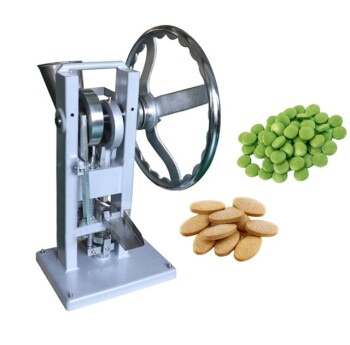A lamination press is a specialized hydraulic compression press designed to bond multiple layers of materials together, creating a stronger, more durable composite material. It is widely used in industries such as furniture manufacturing, construction, and decorative material production. By applying heat and pressure, the press permanently joins materials like impregnated paper, particleboard, and fiberboard, enhancing their structural integrity and aesthetic appeal. Lamination presses are particularly valued for their ability to reduce manufacturing costs while maintaining high-quality output, making them essential for producing items like panel furniture, wooden doors, and fireproof door surfaces.
Key Points Explained:

-
Definition and Function of a Lamination Press:
- A lamination press is a hydraulic compression press used to bond two or more layers of materials together, creating a laminate.
- Its primary function is to produce stronger, more durable materials than the original components.
- It achieves this by applying heat and pressure to permanently join the layers.
-
Types of Materials Processed:
- Commonly used materials include impregnated paper, particleboard, and fiberboard.
- These materials are often combined to create decorative surfaces for furniture, doors, and building partitions.
-
Applications in Industry:
- Furniture production: Used for hot-pressing bonding in panel furniture.
- Construction: Applied in the manufacturing of wooden doors, fireproof doors, and building partition walls.
- Decorative materials: Enhances the aesthetic appeal of surfaces through short-cycle lamination technology.
-
Benefits of Using a Lamination Press:
- Cost Efficiency: Reduces manufacturing costs by producing stronger materials in a single process.
- Durability: Creates materials that are more resistant to wear and tear.
- Market Competitiveness: Helps manufacturers maintain a competitive edge by delivering high-quality, durable products.
-
Technology and Process:
- Short-Cycle Lamination: A key technology where impregnated paper is pressed onto particleboard or fiberboard to create decorative surfaces.
- Hydraulic System: Provides the necessary pressure for effective bonding.
- Heat Application: Ensures the materials are permanently joined, enhancing the final product's strength and durability.
-
Industries and Use Cases:
- Furniture Factories: For producing panel furniture and decorative surfaces.
- Wooden Door Factories: For manufacturing durable and aesthetically pleasing doors.
- Fireproof Door Production: For creating surfaces that meet safety and durability standards.
By understanding these key points, purchasers of equipment and consumables can make informed decisions about investing in lamination presses, ensuring they meet their production needs and quality standards.
Summary Table:
| Key Aspect | Details |
|---|---|
| Definition | Hydraulic press bonding layers of materials for stronger, durable laminates. |
| Materials Processed | Impregnated paper, particleboard, fiberboard. |
| Applications | Furniture, wooden doors, fireproof doors, decorative surfaces. |
| Benefits | Cost efficiency, durability, market competitiveness. |
| Technology | Short-cycle lamination, hydraulic system, heat application. |
| Industries | Furniture factories, wooden door factories, fireproof door production. |
Ready to enhance your production process? Contact us today to find the perfect lamination press for your needs!













